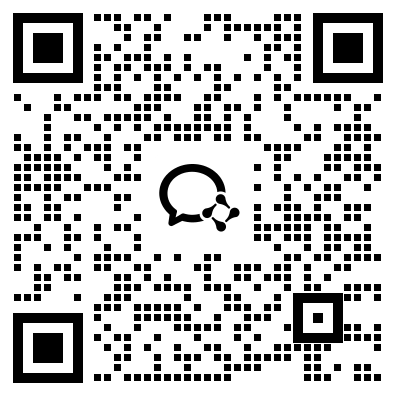考研201英语(一)在线题库每日一练(三百七十七)
摘要:以下是希赛网给大家分享考研201英语(一)在线题库每日一练,希望通过刷题可以帮助大家巩固重要知识点,对知识点查漏补缺,祝愿大家能顺利通过考试!
本文提供考研201英语(一)在线题库每日一练,以下为具体内容
1、Last year marked the third year in a row that Indonesia’s bleak rate of deforestation has slowed in pace. One reason for the turnaround may be the country's antipoverty program.In 2007, Indonesia started phasing in a program that gives money to its poorest residents under certain conditions, such as requiring people to keep kids in school or get regular medical care. Called conditional cash transfers or CCTs, these social assistance programs are designed to reduce inequality and break the cycle of poverty. They're already used in dozens of countries worldwide. In Indonesia, the program has provided enough food and medicine to substantially reduce severe growth problems among children.But CCT programs don't generally consider effects on the environment. In fact, poverty alleviation and environmental protection are often viewed as conflicting goals, says Paul Ferraro, an economist at Johns Hopkins University.That's because economic growth can be correlated with environmental degradation, while protecting the environment is sometimes correlated with greater poverty. However, those correlations don't prove cause and effect. The only previous study analyzing causality, based on an area in Mexico that had instituted CCTs, supported the traditional view. There, as people got more money, some of them may have more cleared land for cattle to raise for meat, Ferraro says.Such programs do not have to negatively affect the environment, though. Ferraro wanted to see if Indonesia’s poverty-alleviation program was affecting deforestation. Indonesia has the third-largest area of tropical forest in the world and one of the highest deforestation rates. Ferraro analyzed satellite data showing annual forest loss from 2008 to 2012 — including during Indonesia's phase-in of the antipoverty program — in 7,468 forested villages across 15 provinces and multiple islands. The duo separated the effects of the CCT program on forest loss from other factors, like weather and macroeconomic changes, which were also affecting forest loss. With that, “we see that the program is associated with a 30 percent reduction in deforestation,” Ferraro says.That's likely because the rural poor are using the money as makeshift insurance policies against inclement weather, Ferraro says. Typically, if rains are delayed, people may clear land to plant more rice to supplement their harvests. With the CCTs, individuals instead can use the money to supplement their harvests.Whether this research translates elsewhere is anybody's guess. Ferraro suggests the importance of growing rice and market access. And regardless of transferability, the study shows that what's good for people may also be good value of the avoided deforestation just for carbon dioxide emissions alone is more than the program costs.1.According to the first two paragraphs, CCT programs aim to ( ).2.The study based on an area in Mexico is cited to show that ( ).3.In his study about Indonesia, Ferraro intends to find out ( ).4.According to Ferraro, the CCT program in Indonesia is most valuable in that ( ). 5.What is the text centered on?
问题1
A、facilitate health care reform
B、help poor families get better off
C、improve local education systems
D、lower deforestation rates
问题2
A、cattle rearing has been a major means of livelihood for the pool
B、CCT programs have helped preserve traditional lifestyles
C、antipoverty efforts require the participation of local farmers
D、economic growth tends to cause environmental degradation
问题3
A、its acceptance level of CCTs
B、its annual rate of poverty alleviation
C、the relation of CCTs to its forest loss
D、the role of its forests in climate change
问题4
A、it will benefit other Asian countries
B、it will reduce regional inequality
C、it can protect the environment
D、it can boost grain production
问题5
A、The effects of a program.
B、The debates over a program.
C、The process of a study.
D、The transferability of a study.
2、As a historian who's always searching for the text or the image that makes us re-evaluate the past, I've become preoccupied with looking for photographs that show our Victorian ancestors smiling (what better way to shatter the image of 19th-century prudery?). I’ve found quite a few, and – since I started posting them on Twitter – they have been causing quite a stir. People have been surprised to see evidence that Victorians had fun and could, and did, laugh. They are noting that the Victorians suddenly seem to become more human as the hundred-or-so years that separate us fade away through our common experience of laughter.Of course, I need to concede that my collection of "Smiling Victorians" makes up only a tiny percentage of the vast catalogue of photographic portraiture created between 1840 and 1900, the majority of which show sitters posing miserably and stiffly in front of painted backdrops, or staring absently into the middle distance. How do we explain this trend?During the 1840s and 1850s, in the early days of photography, exposure times were notoriously long: the daguerreotype photographic method (producing an image on a silvered copper plate) could take several minutes to complete, resulting in blurred images as sitters shifted position or adjusted their limbs. The thought of holding a fixed grin as the camera performed its magical duties was too much to contemplate, and so a non-committal blank stare became the norm.But exposure times were much quicker by the 1880s, and the introduction of the Box Brownie and other portable cameras meant that, though slow by today's digital standards, the exposure was almost instantaneous. Spontaneous smiles were relatively easy to capture by the 1890s, so we must look elsewhere for an explanation of why Victorians still hesitated to smile.One explanation might be the loss of dignity displayed through a cheesy grin. “Nature gave us lips to conceal our teeth,” ran one popular Victorian saying, alluding to the fact that before the birth of proper dentistry, mouths were often in a shocking state of hygiene. A flashing set of healthy and clean, regular "pearly whites" was a rare sight in Victorian society, the preserve of the super-rich (and even then, dental hygiene was not guaranteed).A toothy grin (especially when there were gaps or blackened teeth) lacked class: drunks, tramps, and music hall performers might gurn and grin with a smile as wide as Lewis Carroll's gum-exposing Cheshire Cat, but it was not a becoming look for properly bred persons. Even Mark Twain, a man who enjoyed a hearty laugh, said that when it came to photographic portraits there could be “nothing more damning than a silly, foolish smile fixed forever”.1.According to paragraph 1, the author's posts on Twitter( ).2.What does author say about the Victorian portraits he has collected?3.What might have kept the Victorians from smiling for pictures in the 1890s?4.Mark Twain is quoted to show that the disapproval of smiles in pictures was( ).5.Which of the following questions does the text answer?
问题1
A、changed people's impression of the Victorians
B、highlighted social media's role in Victorian studies
C、re-evaluated the Victorians notion of public image
D、illustrated the development of Victorian photography
问题2
A、They are in popular use among historians.
B、They are rare among photographs of that age.
C、They mirror 19th-century social conventions.
D、They show effects of different exposure times.
问题3
A、Their inherent social sensitiveness.
B、Their tension before the camera.
C、Their distrust of new inventions.
D、Their unhealthy dental condition.
问题4
A、a deep-root belief
B、a misguided attitude
C、a controversial view
D、a thought-provoking idea
问题5
A、Why did most Victorians look stern in photographs.
B、Why did the Victorians start to view photographs.
C、What made photography develop slowly in the Victorian period.
D、How did smiling in photographs become a post-Victorian norm.
3、Today we live in a world where GPS systems, digital maps, and other navigation apps are available on our smart phones. _1_ of us just walk straight into the woods without a phone. But phones _2_ on batteries, and batteries can die faster than we realize. _3_ you get lost without a phone or a compass, and you _4_ can’t find north, a few tricks to help you navigate _5_ to civilization, one of which is to follow the land. When you find yourself well _6_ a trail, but not in a completely _7_ area, you have to answer two questions: Which _8_ is downhill, in this particular area? And where is the nearest water source? Humans overwhelmingly live in valleys, and on supplies of fresh water. _9_, if you head downhill, and follow any H2O you find, you should _10_ see signs of people. If you’ve explored the area before, keep an eye out for familiar sights—you may be _11_ how quickly identifying a distinctive rock or tree can restore your bearings. Another _12_: Climb high and look for signs of human habitation. _13_, even in dense forest, you should be able to _14_ gaps in the tree line due to roads, train tracks, and other paths people carve _15_ the woods. Head toward these _16_ to find a way out. At night, scan the horizon for _17_ light sources, such as fires and streetlights, then walk toward the glow of light pollution. _18_, assuming you’re lost in an area humans tend to frequent, look for the _19_ we leave on the landscape. Trail blazes, tire tracks, and other features can _20_ you to civilization.
问题1
A、 Few
B、 More
C、 Some
D、 All
问题2
A、 put
B、 take
C、 run
D、 come
问题3
A、 Since
B、 Until
C、 Though
D、 If
问题4
A、 formally
B、 literally
C、 gradually
D、 relatively
问题5
A、 around
B、 away
C、 back
D、 next
问题6
A、 onto
B、 along
C、 across
D、 off
问题7
A、 unattractive
B、 unfamiliar
C、 unchanged
D、 uncrowded
问题8
A、 way
B、 point
C、 site
D、 place
问题9
A、 Instead
B、 Yet
C、 So
D、 Besides
问题10
A、 immediately
B、 eventually
C、 unexpectedly
D、 intentionally
问题11
A、 frightened
B、 annoyed
C、 surprised
D、 confused
问题12
A、 problem
B、 result
C、 view
D、 option
问题13
A、 Above all
B、 For example
C、 On average
D、 In contrast
问题14
A、 spot
B、 avoid
C、 bridge
D、 separate
问题15
A、 from
B、 under
C、 beyond
D、 through
问题16
A、 posts
B、 breaks
C、 shades
D、 links
问题17
A、 hidden
B、 mysterious
C、 artificial
D、 limited
问题18
A、 Finally
B、 Consequently
C、 Incidentally
D、 Generally
问题19
A、 memories
B、 belongings
C、 notes
D、 marks
问题20
A、 lead
B、 adapt
C、 restrict
D、 expose
4、Scientific publishing has long been a licence to print money. Scientists need journals in which to publish their research, so they will supply the articles without monetary reward. Other scientists perform the specialized work of peer review also for free, because it is a central element in the acquisition of status and the production of scientific knowledge.With the content of papers secured for free, the publisher needs only find a market for its journal. Until this century, university libraries were not very price sensitive. Scientific publishers routinely report profit margins approaching 40% on their operations, at a time when the rest of the publishing industry is in an existential crisis.The Dutch giant Elsevier, which claims to publish 25% of the scientific papers produced in the world, made profits of more than £900m last year, while UK universities alone spent more than £210m in 2016 to enable researchers to access their own publicly funded research; both figures seem to rise unstoppably despite increasingly desperate efforts to change them.The most drastic, and thoroughly illegal, reaction has been the emergence of Sci-Hub, a kind of global photocopier for scientific papers, set up in 2012, which now claims to offer access to every paywalled article published since 2015. The success of Sci-Hub, which relies on researchers passing on copies they have themselves legally accessed, shows the legal ecosystem has lost legitimacy among its users and must be transformed so that it works for all participants.In Britain the move towards open access publishing has been driven by funding bodies. In some ways it has been very successful. More than half of all British scientific research is now published under open access terms: either freely available from the moment of publication, or paywalled for a year or more so that the publishers can make a profit before being placed on general release.Yet the new system has not worked out any cheaper for the universities. Publishers have responded to the demand that they make their product free to readers by charging their writers fees to cover the costs of preparing an article. These range from around £500 to $5,000. A report last year pointed out that the costs both of subscriptions and of these “article preparation costs” had been steadily rising at a rate above inflation. In some ways the scientific publishing model resembles the economy of the social internet: labour is provided free in exchange for the hope of status, while huge profits are made by a few big firms who run the market places. In both cases, we need a rebalancing of power.1.Scientific publishing is seen as "a licence to print money" partly because( ).2. According to Paragraphs 2 and 3, scientific publishers Elsevier have( ).3.How does the author feel about the success of Sci-Hub?4.It can be learned from Paragraphs 5 and 6 that open access terms( ).5.Which of the following characterises the scientific publishing model?
问题1
A、its funding has enjoyed a steady increase
B、its marketing strategy has been successful
C、its payment for peer review is reduced
D、its content acquisition costs nothing
问题2
A、thrived mainly on university libraries
B、gone through an existential crisis
C、revived the publishing industry
D、financed researchers generously
问题3
A、Relieved.
B、Puzzled.
C、Concerned.
D、Encouraged.
问题4
A、allow publishers some room to make money
B、render publishing much easier for scientists
C、reduce the cost of publication substantially
D、free universities from financial burdens
问题5
A、Trial subscription is offered.
B、Labour triumphs over status.
C、Costs are well controlled.
D、The few feed on the many.
5、The Earth’s daily clock, measured in a single revolution, is twenty-four hours. The human clock, 1, is actually about twenty-five hours. That’s 2 scientists who study sleep have determined from human subjects who live for several weeks in observation chambers with no 3 of day or night. Sleep researchers have 4 other surprising discoveries as well.We spend about one-third of our lives asleep, a fact that suggests sleeping. 5 eating and breathing, is fundamental life process. Yet some people almost never sleep, getting by on as 6 as fifteen minutes a day. And more than seventy years of 7 into sleep deprivation, in which people have been kept 8 for three to ten days, has yielded only one certain findings: Sleep loss makes a person sleepy and that’s about all; it causes no lasting ill 9. Too much sleep, however, may be 10 for you.These findings 11 some long-held views of sleep, and they raise questions about its fundamental purpose in our lives. In 12, scientists don’t know just why sleep is necessary.“We get sleepy, and when we sleep, that sleepiness is reversed,” Dr. Howard Roffwarg of the University of Texas in Dallas explains. “We know sleep has a function, 13 we feel it has a function. We can’t put our finger on it, but it must, 14 in some way, direct or indirect, have to do with rest and restitution.”Other scientists think sleep is more the result of evolutionary habit than 15 actual need. Animals sleep for some parts of the day perhaps because it is the 16 thing for them to do: it keeps them 17 and hidden from predators; it’s a survival tactic. Before the advent of electricity, humans had to spend at least some of each day in 18 and had little reason to question the reason or need for 19 But the development of the electroencephalograph and the resulting discovery in 1937 of dramatic 20 in brain activity between sleep and wakefulness opened the way for scientific inquiry in the subject.
问题1
A、however
B、furthermore
C、likewise
D、therefore
问题2
A、the
B、what
C、because
D、many
问题3
A、idea
B、feeling
C、sense
D、judgment
问题4
A、come up against
B、come down to
C、come up with
D、come up to
问题5
A、with
B、like
C、unlike
D、as
问题6
A、little
B、much
C、few
D、long
问题7
A、probe
B、investigation
C、research
D、examination
问题8
A、asleep
B、sleepy
C、active
D、awake
问题9
A、effects
B、affections
C、affects
D、impacts
问题10
A、useful
B、good
C、bad
D、harmful
问题11
A、challenge
B、deny
C、doubt
D、dispute
问题12
A、addition
B、fact
C、line
D、short
问题13
A、if
B、because
C、like
D、provided
问题14
A、at least
B、at most
C、at best
D、at worst
问题15
A、from
B、an
C、the
D、of
问题16
A、worst
B、best
C、only
D、natural
问题17
A、comfortable
B、calm
C、quiet
D、excited
问题18
A、coldness
B、warmth
C、darkness
D、shade
问题19
A、sleep
B、work
C、food
D、clothes
问题20
A、differences
B、similarities
C、resemblance
D、opposites
延伸阅读
- 历年考研国家分数线汇总(更新至2025年)
- 2025考研国家分数线正式发布
- 2025全国各省考研初试成绩公布时间汇总(更新中)
- 2025年考研成绩公布时间及查询流程
- 2025年全国硕士研究生招生考试(初试)温馨提示汇总
- 2025年全国硕士研究生招生考试考场规则

考研微信公众号

考研备考资料免费领取
去领取
- 1
- 1
- 8
 专注在线职业教育24年
专注在线职业教育24年









 扫描二维码
扫描二维码
 扫描二维码
扫描二维码








